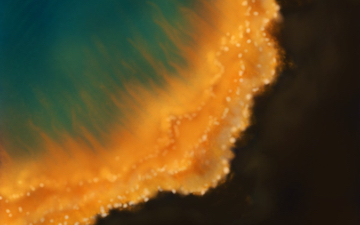Red tide is a common name for algal blooms, which are large concentrations of aquatic microorganisms, such as protozoans and unicellular algae (e.g. dinoflagellates and diatoms). The upwelling of nutrients from the sea floor, often following massive storms, provides for the algae and triggers bloom events. Harmful algal blooms can occur worldwide, and natural cycles can vary regionally.[1]
The growth and persistence of an algal bloom depends on wind direction and strength, temperature, nutrients, and salinity.[1] Red tide species can be found in oceans, bays, and estuaries, but they cannot thrive in freshwaterenvironments.[2][1] Certain species of phytoplankton and dinoflagellates found in red tides contain photosynthetic pigments that vary in color from brown to red. When the algae are present in high concentrations, the water may appear to be discolored or murky. The most conspicuous effects of red tides are the associated wildlife mortalities and harmful human exposure. The production of natural toxins such as brevetoxins and ichthyotoxins are harmful to marine life.[3]
(From Wikipedia, June 10)


